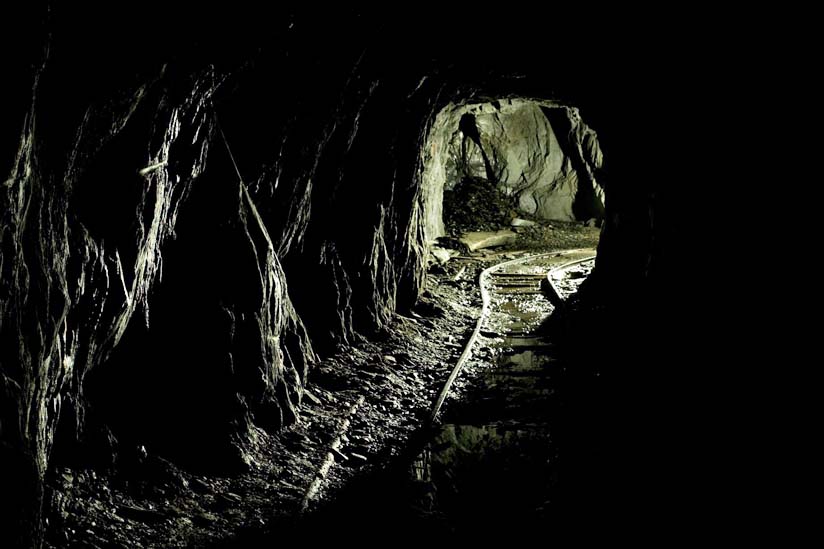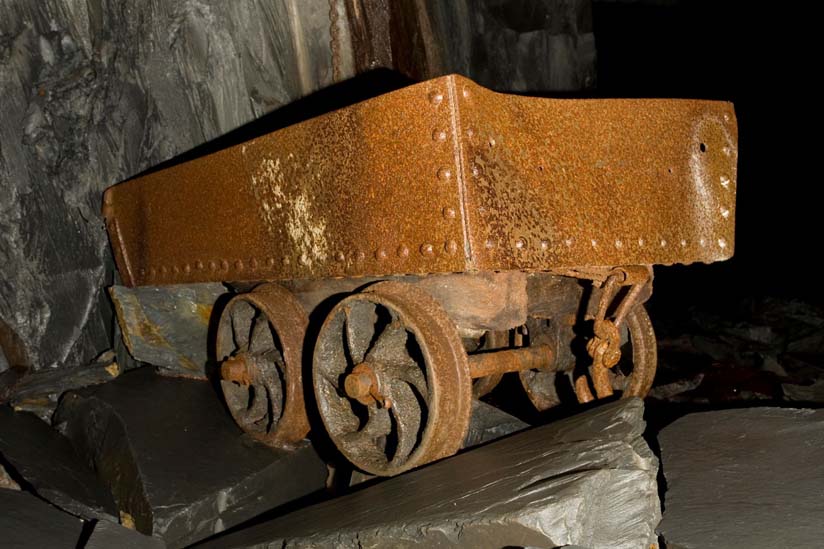











They are the haunting remnants of a once thriving industry that saw slate quarried deep from the bowels of a mid-Wales hillside and shipped all over the world.
Discarded cigarette packets, a rusting kettle, and a clay pipe are among remains at the Braich Goch Corris Mine, which have been left untouched for over 100 years, providing a unique insight to what life was like when slate and sweat made mid-Wales an economic powerhouse.
Today the Corris Mine operates as a tourist attraction, but at its height it saw men quarrying 7,000 tonnes of slate in an industry that dominated much of north and mid-Wales.
Men would spend their entire working lives, from boyhood to grave, in one of the mine's huge caverns, where the threat of death and injury loomed large.
The vast snaking caverns, each with intricate rock formations, shelves, and ledges, stretch out for twenty miles beneath the hillside.
By the mid-19th century Wales was producing 92 percent of all UK roofing material.

18,000 Strong Workforce
And by 1898, the men at Corris were part of a larger workforce of 18,000 employed in producing half a million tonnes of roofing slate in Wales.
But for every tonne of usable slate, 30 tonnes of waste is dug out, and the industry has left its mark all over Wales, in Blaenau Ffestiniog a massive slate tip still towers over the town.
When demand fell and costs rose the industry that had employed 250 men around Braich Goch in open-cast pits above the site where the Corris Craft Centre now stands went into rapid decline.
Now functioning as a visitor attraction, Corris Mine Explorers, Braich Goch collapsed in 1906 before another six companies worked it until the death knell was sounded once and for all in 1970.
Elsewhere in Wales, the industry was also hitting problems, a bitter industrial dispute at Penrhyn Quarry, in North Wales, between 1900 and 1903 marked the end of slate there.
At Braich Goch, mining had started around 1800 before tunnels were driven through the hillside three decades later to reach the seam of slate deeper in the mountain.
Now Slate Comes from China and Spain
The early years of the mine saw four different firms fail before the Corris Railway opened in 1859 and the Braich Goch Slate Quarry Company was set up five years later.
Over the years, seven different levels were excavated.
Levels four, five, and six are explored by visitors to the attraction.
Level six is also used by the King Arthur's Labyrinth, another tourist attraction on the site of the mine.
Now much of the slate used in Wales is imported from places like China and Spain, with only a few remaining operators in the country.
And though the industry that once made us a global powerhouse is now just a shadow of its former self, Welsh slate's reputation as among the finest in the world has endured.
Author unknown.